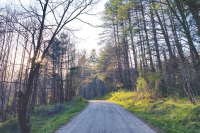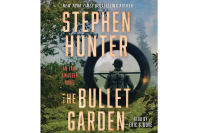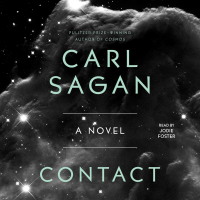Women to watch
By Chris Cooper
In the mid 90’s it would’ve been nearly impossible to write about “new to the scene” female artists without mentioning Paula Cole. You know, “Where Have All The Cowboys Gone?” and all that.
The rhythm method weekend
By Chris Cooper
It’s been a year at least since I did a live show review, and it’s likely that that last review involved Sylva’s one bright hope for a live music venue, Guadalupe Café. I’m also pretty certain that in the aforementioned article a particular ever-evolving band of musical n’er do wells (Shiner Miners) made an appearance, and there may have been some minor chastising involved by yours truly regarding certain long-winded excursions into the great wide world of tuning by Mr. Webb and Co. that evening.
It was a while back and my memory is hazy, so that’s merely my best recollection.
But Friday night, a little after 10 o’clock, a band that so closely resembled the Shiner Miners it was shocking took the, err “stage,” at the Guad and proceeded to bang out some of the tightest and freakiest “smartass with a sense of humor” rock I’ve heard just about ever in this town. Still quirky, still a bit disheveled and glassy eyed, but this new, leaner three-piece gave me the distinct impression that they actually had their *&^% together, and have developed into one of the better rhythm sections in town.
Put simply, no matter how goofy the music may occasionally come across, drummer Isaac Sturgill and bassist Jason Beck have achieved that joined-at-the-hip quality that defines a band’s sound and momentum. As a guitarist, Webb has embraced the creative use of effects (namely echo) lending a whole new atmosphere to the mutated reggae/rap/dub/country/spoken word/rock thing that’s become a sort of trademark.
That’s not to say that the slop we all know and love isn’t still there — it’s just that the Shiner Miners are getting so good at being themselves that even the slop is refined. The usual crowd of locals was present, and by the second set was wound up into such a frenzy that clothing began disappearing, footwear was set aloft, spontaneous wrestling matches broke out and even a fine example of the good old fashioned “drunken lip-lock on the dance floor” made an appearance. If my calculations are correct and all the votes have been processed and accounted for, the Shiner Miners easily won the “most improved local band of people that I’m friends with but that I’m not obligated to say nice things about” award, and that ain’t no small feat.
The next night was the fourth (fifth?) installment of Sylva’s “Play For Peace” music ... thing, with multi-instrumentalist extraordinaire Matt Williams kicking off the late evening festivities. Considering the amount of times a mysterious “scheduling conflict” was mentioned into the mic, my educated guess is that there may have been some kind of “scheduling conflict” regarding who (Williams or funky jam upstarts Ideal Way) was the opener and headliner, but again, that’s just a guess — albeit a sarcastic one.
There’s no doubting the considerable skills of Williams and accompanist Stephen Foster (who qualifies as a multi-instrumentalist in his own right, looking at the sheer number of horns of varying shape and size he brought along for the ride) when you see them perform.
Williams has so many instruments under his belt, such a command of on-the-fly looping and layering (including his vocals) that it’s tough not to be a little knocked out when you see the guy pull it all off right in front of you. His fondness for vaguely 70’s styled “prog-pop” is apparent, with phased-out Jean Luc-Ponty styled violin solos taking flight over his major and minor seventh based “mini jams.”
And as carefully rehearsed as this kind of performance has to be, there were true moments of spontaneous improvisation, especially when he and Foster began trading fours and playing off each other. My only wish was for a little more ebb and flow in the set, maybe a few more numbers delivered sans looping and such fanciness, so that when Williams does build that miniature orchestra of sound we know he carries around in his head it’s just that much more meaningful.
Regardless, Williams has been hard at work in WCU’s studio on several new albums slated for fall and winter release, and if the new tunes in his set are any indication, they’re going to be quite excellent.
Back to the rhythm section thing — Ideal Way has a great one. As if it wasn’t difficult enough to basically improvise an entire set of music (in this case, an hour or two) it’s even tougher to make the majority of it actually work, and it’s that quality that may eventually separate Ideal Way from much of the tie-dyed jam band pack. There are bassists that groove, and there are bassists that noodle, but in Christian Ferri you get the better elements of both. Positively super-glued to Caleb Beissert’s bass drum, the duo struck the just the right balance of busyness and dynamic interplay in order to give Brett Dumsha’s guitar enough space to cluck, squawk and squeal as needed.
Though some of the transitions between the “songs” got a little lost, once these guys found a groove they chomped down on it like an emaciated pitbull on Ronald McDonald’s burger scented hand. Amidst the wacka-wacka of the wah pedal and the syncopated goodness of the drums and bass, there was a head-bobbing, hippie-dancing good time to be had by all, and though the vibe was completely different than that of the previous night, having two nights in a row of fine music on Main Street is nothing to scoff at.
But even better — it was proof that people do indeed still enjoy hearing talented players stretch out and take chances onstage, be it the brainy oddball antics of the Shiner Miners, the meticulously crafted singer/songwriter pop of Matt Williams or the inspired, mercurial soundscapes of Ideal Way: all local musicians, and all damn good. Now stop whining about being bored and go see a show.
(Chris Cooper can be reached at This email address is being protected from spambots. You need JavaScript enabled to view it.)
A voyage beyond new age
By Chris Cooper
Sometimes your ears want something different. Maybe they need to hear that which steps beyond traditional form into something at once simpler and more complex; where pure, unadulterated melody and soulfulness carry the music to places unfamiliar but undeniably inviting. Or maybe you’re just getting sick to death of guitars and drums and three-minute pop ditties that are about as filling as a handful of stale Cheetos.
The guiltiest of guilty pleasures
By Chris Cooper
OK, yes, it’s a widely held opinion that the Reagan years doled out its fair share of really, really awful music, clothes and other cultural oddities. Geometrically impossible haircuts, weirdo shoulder pads, ridiculously pointy, paint splattered guitars — the list could roll on for miles.
Good music for nice people
By Chris Cooper
John Prine and Mac Wiseman: Standard Songs For Average People
John Prine just sounds like a nice guy. You can almost hear the side of his mouth curl into a grin as he finishes a line, even on a sad little waltz like “The Blue Side Of Lonesome.” He’s also not a “singer’s singer,” he doesn’t belt it out and wow you with his pipes. But for most of us that’s another reason to love the guy, because what he does with what he’s got is always so satisfying and genuine. Joined here by bluegrass troubadour Mac Wiseman, Standard Songs For Average People collects 14 songs, some well known and some not, for these two remarkable singer/songwriters to interpret however they see fit.
You get anything from the brushed snare and tinkling piano nostalgia of “Old Cape Cod” to the world-weary storytelling of “Old Dogs, Children and Watermelon Wine,” both endowed with gorgeous backups from the Carol Lee Singers. You’re also afforded the opportunity to hear these two artists having fun with each other, trading verses with an almost conversational quality that masks some of the fact that this is a studio recording, not an impromptu songwriter’s jam among friends. The acoustic guitars are warm and woody, the vocals sweet, and the arrangements impeccable in their simplicity. It can’t hurt to have a virtual laundry list of fine players contributing to the project, with Tim O’Brien on banjo and mandolin, Del McCoury bassist Mike Bub and multi-instrumentalist/session man extraordinaire Pat McLaughlin on just about everything else with a string on it.
Swinging, two-stepping and tear-in-the-beering its way through just over an hour, Standard Songs For Average People is just the right thing for when you’re just a little blue, and these guys are just such characters on the microphone that it’s hard not to crack a smile after a while. This is an album that draws from many traditional American country sounds, from the mountains way down to Texas. Add to that the caliber of musicians delivering the material, and all you’ve left to do is cue up “Saginaw, Michigan” and turn the volume in a general “up” type direction.
Various Artists: Texas Hoedown Revisited
Fiddle tunes have served as a kind of boot camp not only for budding fiddlers but for many bluegrass mandolinists and guitarists alike. Doc Watson made a name for himself by adapting many such songs to the guitar’s repertoire. With County Records’ recent re-release (with the prerequisite bonus material) of 1965’s Texas Hoedown, you get to hear a few of the lesser known Texas fiddle practitioners; Benny Thomasson, Bartow Riley and Vernon Solomon. Thomasson gets the majority of the aural real estate here, sawing his way through half the CD on the classics “Ace Of Spades” and “Lady’s Fancy,” as well as some more obscure picks like “Killie McCrankie.”
Things almost veer into the realm of swing when Vernon Solomon tackles “Beaumont Rag,” accompanied here by chopping guitar and loping piano from his two sons, only 13 and 16 at the time of these recording sessions. Listening to the performances of all three fiddlers is a lesson in the appreciation of expression and technique inherent in the instrument, with Thomasson going pizzicato in the middle of “Black Mountain Rag” or Solomon’s exceptionally smooth bowing and intonation on “Red Apple Rag.” Riley gets some quick legato runs and a few blue notes in “Grey Eagle,” and in all, though Texas Hoedown Revisited is whole bunch of fiddle to consume in one sitting, it’s an enjoyable meal.
This re-issue as well includes some unusual tracks and live material- Thomasson’s “Star Waltz” is a pretty little tune that suffers a bit from wobbly intonation. He and an unknown group of accompanists get the last word here with live performances of “Forty Years Ago Waltz” and “Golden Eagle Hornpipe,” complete with wind noise in the microphone and the occasional chuckle from an audience member. Taken as a whole, though, Texas Hoedown Revisited surely succeeds in its goal: unearthing 24 tracks of fine Texas fiddle music from three of its best players.
(Chris Cooper can be reached at This email address is being protected from spambots. You need JavaScript enabled to view it..)
Taking steps in the right direction
By Chris Cooper
If a band stays together long enough, it’ll probably morph into something a little beyond its starting point. At least, that’s the idea. With King Wilkie, this evolution involved letting the straight bluegrass roots of their beginnings fall away in favor of a more truthful, colorful representation of who they are.
When ‘it’ is right in front of you
By Chris Cooper
Sia: Lady Croissant
To a degree, it seems like Zero 7 makes “electronic” music for people that normally wouldn’t really dig the style. Besides the brilliant mix of orchestral, traditional pop and soul elements evident in their work, it’s their skill in casting vocalists that bring exceptionally distinct flavors and interpretive skills to the material that borders on genius.
Among those unique singers is Australian crooner Sia Fuller, who was featured prominently on the group’s 2001 release Simple Things. The tracks that featured her, “Destiny” and “Distractions,” displayed a singer with a similar tonal quality to artists like Nelly Furtado and Dido, but endowed with a bluesy grit and chops that easily eclipse the two.
Sia’s solo album from 2006, Colour The Small One expounded on her neo-soul vibe with a lush collection of songs that possessed a few things many artists in this style tend to skimp on — depth, colorful imagery and imagination.
With Lady Croissant Furler serves up one new studio track and a gorgeous (if rather short) live set from NYC’s Bowery Ballroom. The new tune, “Pictures,” clangs with bouncing mid-tempo power-pop beneath a tale that makes infatuation sound remarkably similar to a severe allergic reaction.
It’s the live set that’s the highlight here, proof that Sia (and a crack band of musicians) can deliver these songs without the aid of studio magic and trickery. The arrangements keep only the parts that really make these songs tick, and nowhere in the set does anything sound empty or lacking — if anything, many of these tunes shine a bit more in this stripped down format. “Numb” readily demonstrates this, reveling in the power and dynamics that only a live band can bring to a song.
Sia does her best Chrissie Hynde on the Ray Davies penned “I Go To Sleep,” which features guitarist Gus Seyffert laying some sly Wes Montgomery styled octaves in the verses. “Breathe,” her recent hit (featured on the wildly popular Grey’s Anatomy) surges with drama and intensity, and hearing her wail on the extended outro forces me to ponder why anyone is willing to settle for glossy, half-hearted attempts at modern soul by artists like Joss Stone when there’s an album like this just waiting to be heard.
Lady Croissant needs no butter or jam at all; it’s quite tasty just as it is.
David Gray: Shine: The Best Of The Early Years
It’s easy to forget that for the most part David Gray is a guitar playing singer/songwriter in the truest sense. This is partially due to the success of 00’s White Ladder and the single “Babylon,” which had his guitar sharing much of its space with prominent drum machine and synth burbles, blips and clicks. It’s not that those are bad things at all; it just makes hearing Gray’s earlier “folk and roll” based work that much more interesting.
Take a tune like “Late Night Radio.” It’s big. It rocks. Gray’s sensitive guy thing is fully apparent on much of this collection (culled from his first three releases) but it’s mixed up in varying degrees of production and delivery, from the aforementioned bombast to the near Americana crunch of “A Century Ends” and “Faster, Sooner, Now” to the undeniably Irish waltz of “Debauchery.” But the element that’s most consistent is Gray’s singular gift as a lyricist — a quality that prompted Joan Baez to describe him as the best since Dylan. Higher praise would be quite hard to muster up, eh?
Shine’s pacing is unusual in that it ebbs and flows in such a way that it’s tough to put your finger on exactly what period of his career some of the songs come from. “The Light” feels like a close cousin of “Babylon,” but it’s from 94’s Flesh. Sparsely arranged and bare, “Holding To Nothing” has the feel of a much earlier composition, yet it appeared on the album just before White Ladder. Despite any unintentional anachronistic trickery, it’s only the very oldest material that reveals a “young” sounding David Gray, and even then it’s more the production that gives it away than his performance, and by the end of Shine it’s hard not to imagine that Gray must’ve sprung from the womb with his talents fully realized.
The joy of both these CD’s is the opportunity to hear two musicians in settings that shed new light on the sounds you may have assumed to know pretty well. The common assumptions might be that a “session” vocalist (Sia) may not be able to hang too convincingly in the live arena, or that we only get introduced to an artist (Gray) once they’ve recorded their “best” album for a major label. But in the case of these two, they had “it” the whole time. We just had to catch up to them.
(Chris Cooper can be reached at This email address is being protected from spambots. You need JavaScript enabled to view it.)
A serendipitious selection of CDs
By Chris Cooper
Ah ... the joys of moving. Once you’ve got everything boxed up and ready to go, there’s usually about 2 metric tons of junk left over that you just don’t recall collecting over the years.
Grant-Lee Phillips scores two in a year
By Chris Cooper
First, if you don’t already know (I sure as heck didn’t) fire up Google and read about exactly what a “strangelet” is. Pretty interesting, eh?
Laying down the Lawson
By Chris Cooper
Fusing soaring gospel harmony with finely tuned bluegrass firepower, Doyle Lawson has forged an easily recognizable and smoothly accessible sound over all these years. On his most recent Rounder records release he and his band display an effortless command of the music, all the while sounding as fresh and vital as any of the many “up and coming” groups.













